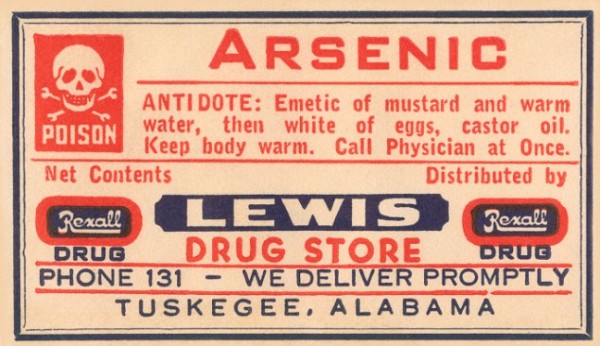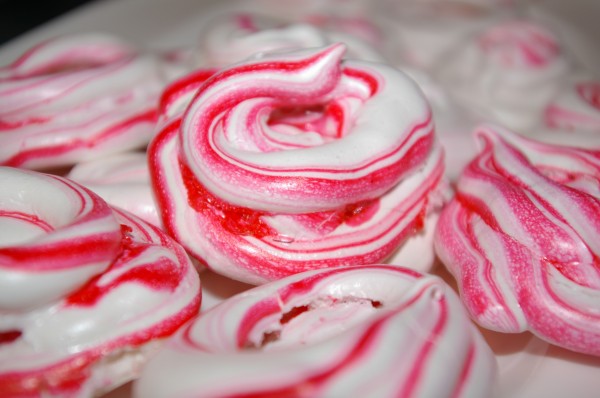On October 30, 1858, William “Humbug Billy” Hardaker inadvertently poisoned over 200 people. His peppermint humbugs were laced with arsenic. The incident reflected the state of Victorian pharmacology and led to law reform.
The tainted candy trail began with Bradford, England, confectioner Joseph Neal. Neal intended to cook up a batch of peppermint humbugs. These sweets are typically made with sugar, glycerin, coloring, and flavoring. Their stripes come from stretching and folding a smaller colored amount of the confection along with the main batch into a long cylinder that is cut into pieces. Victorians used daft as filler. Daft was a cheap substitute substance like plaster of Paris, powdered limestone or sulphate of lime. Neal ordered twelve pounds of daft from chemist Charles Hodgson in Baildon Bridge, which was five miles away.
The errand was mismanaged from the get go. Joseph Neal sent his tenant James Archer to pick up the daft from Charles Hodgson. Hodgson was at work but did not feel well, so he had his assistant William Goddard help Archer fetch the daft. Hodgson told Goddard that he could get the twelve pounds of daft out of a cask in the corner of the cellar. Goddard found the wrong cask and sold Archer twelve pounds of arsenic trioxide.
 The Victorian chemist’s shop often contained controlled substances like arsenic, belladonna, or opium. Arsenic was used in asthma treatments, for improved complexion and as rat poison. Arsenic is odorless and tasteless. The symptoms of arsenic poisoning mimic an upset stomach.
The Victorian chemist’s shop often contained controlled substances like arsenic, belladonna, or opium. Arsenic was used in asthma treatments, for improved complexion and as rat poison. Arsenic is odorless and tasteless. The symptoms of arsenic poisoning mimic an upset stomach.
Joseph Neal had his assistant, James Appleton, cook up a batch of peppermint humbugs with forty pounds of sugar, four pounds of gum and twelve pounds of arsenic that they thought was daft. Appleton felt ill and sneezed throughout the manufacture. The batch looked odd and did not dry as quickly. The batch was sold to Humbug Billy, who marked down the price of the off-color candies. Humbug Billy sold approximately a thousand of these tainted peppermints on October 30, 1858. He ate one, fell ill and asked someone to take over for him at his stall for the rest of the day.
Twenty people died as a result, mostly children. Two hundred people took sick, with over one hundred falling seriously ill. At first an outbreak of cholera was suspected, but physicians determined that all of the victims had eaten the poisonous candy. Bell-ringers alerted Bradford. Police confiscated the sweets.
Joseph Neal, Charles Hodgson, and William Goddard were charged with manslaughter. They were all acquitted because it had been a terrible accident. The public had a strong reaction not necessarily to the poison, but to use of substances like daft to alter their foodstuffs. 1860 saw the Adulteration of Food and Drink Bill. 1868 saw the Pharmacy Act that placed limitations on the sale of poisons and drugs to pharmacists registered with the Pharmaceutical Society. The act saw the death toll due to opium to take an immediate plunge and allowed women to register as pharmacists.
This article owes a debt to Jane Eastoe’s Victorian Pharmacy, the companion book to the BBC series.


There are no voices yet... Post-script us a message below, won't you?